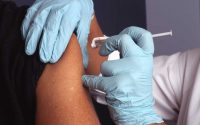Telemedicine reduces cancellations for care during COVID in large Ohio heath center

New research presented at ACR Convergence, the American College of Rheumatology’s annual meeting, shows that expanded use of telemedicine during the COVID-19 pandemic improved cancelation rates, no-shows and completed medical visits for rheumatology ambulatory clinics in one large Ohio health system (ABSTRACT #1584).
Telemedicine is the practice of medicine at a physical distance using various forms of communication technology. While the doctor, nurse or other healthcare professional works at one site, the patient receives care at another site. Telemedicine may be practiced using webcams, smartphones, secure video messaging platforms or other technology. All modalities used are HIPPA compliant.
When COVID-19 surged worldwide in early 2020, many rheumatology clinics and practices cut back on their in-patient care services to reduce the risk of infection spread among their vulnerable patients, many of whom take immune-suppressing drugs that put them at higher risk for serious infections. Some patients remain wary of going into the clinic for routine care due to COVID, and lack of transportation and other issues had been a nagging barrier to rheumatology care in the past.
Researchers wanted to know if telemedicine could bridge gaps in access to rheumatology care, allowing medical visits with physical distancing and eliminating the need for a time-consuming or costly trip to the clinic. In a new retrospective study, researchers at MetroHealth Medical Center in Cleveland, Ohio compared data on completed clinic visits, no-shows and cancelation rates between their in-person and telemedicine appointments for rheumatology clinics in 2020.
“In the setting of a novel infection with unclear infectious characteristics, patients and hospital systems across the country moved to postpone procedures and cancel face-to-face visits due to the potential risk,” says the study’s co-author, Reem Alkilany, MD, a rheumatology fellow at MetroHealth. “Many rheumatology patients are already at an increased risk for infection due to immunosuppressive medications and immune system dysfunction related to their diseases. While in-person visits may place patients at risk for contracting the virus, delaying care can increase the risk for disease flares and the potential need for hospitalization. Telemedicine offered a way for rheumatology patients and providers to connect with one another in place of delayed care or even absence of care.”
The researchers pulled retrospective data from their electronic health record system for rheumatology outpatient appointments between Jan. 3 and May 31, 2020. Appointments were placed in three categories: canceled, no-show or completed. They divided all the data into two 10-week periods: a pre-COVID phase from Jan. 3 to March 15, and a COVID phase from March16 to May 31. During the pre-COVID phase, there were only in-person clinic visits, while in the COVID phase, the clinic offered telemedicine or in-person visits to their patients.
Telemedicine appointment cancelations were nearly zero in the COVID phase, or one out of 825 telemedicine appointments scheduled, compared to the pre-COVID phase, when 527 out of 1677 appointments, all in person, were canceled. No-shows also trended downward when telemedicine became an option for care. In the COVID phase of the study, the clinics had 191 no-shows, including 121 in-person and 70 telemedicine. In the pre-COVID phase, when only in-person care was offered, there were 220 no-shows. During the COVID period, MetroHealth Medical Center also had slight increases in visit completions with telemedicine as an option for rheumatology care: 1,038 completed visits, including 754 telemedicine and 284 in-person visits out of 1675 scheduled visits, compared to only 930 completed visits out of 1677 scheduled, all in person, in the phase of the study before COVID.
Source: Read Full Article


